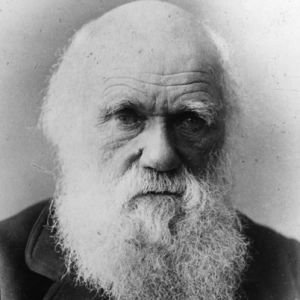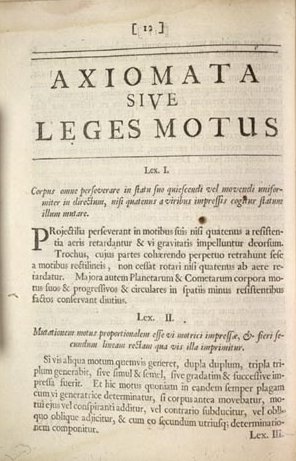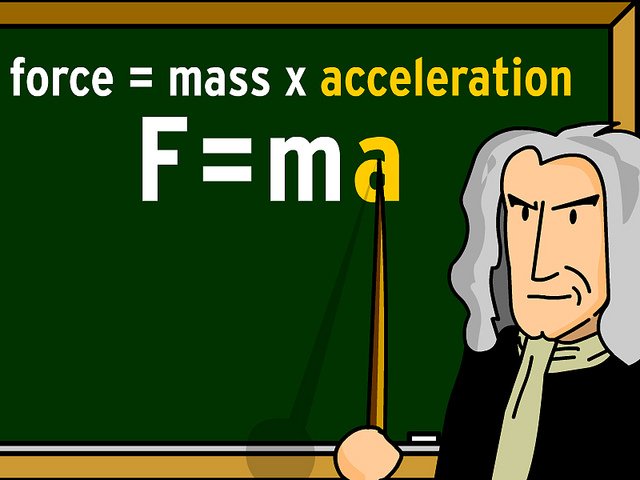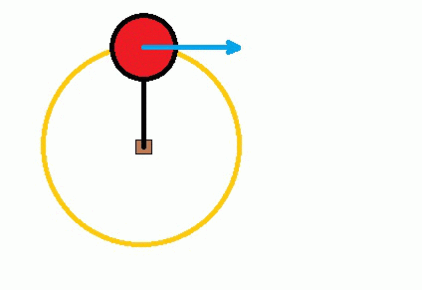Newton's laws - the laws that changed the world - First law
Newton's laws, also known as Newton's laws of motion, are three principles from which a large part of the problems posed in classical mechanics are explained, particularly those related to the movement of bodies, which revolutionized the basic concepts of physics and the movement of bodies in the universe.

They constitute the foundations not only of classical dynamics but also of classical physics in general. Although they include certain definitions and in a certain sense can be seen as axioms, Newton asserted that they were based on observations and quantitative experiments; certainly they can not be derived from other more basic relationships. The proof of its validity lies in its predictions ... The validity of these predictions was verified in each and every one of the cases for more than two centuries.
In particular, the relevance of these laws lies in two aspects: on the one hand they constitute, together with the transformation of Galileo, the basis of classical mechanics, and on the other hand, by combining these laws with the law of universal gravitation, they can be deduce and explain Kepler's laws about planetary motion. Thus, Newton's laws allow us to explain, for example, both the movement of the stars and the movements of the artificial projectiles created by the human being and all the mechanical functioning of the machines.
HISTORY
Dynamics is the part of physics that studies the relationships between the movements of bodies and the causes that cause them, specifically the forces that act on them. The dynamics, from the point of view of classical mechanics, is appropriate for the dynamic study of large systems compared to atoms and moving at speeds much lower than those of light. To understand these phenomena, the starting point is the observation of the everyday world. If you want to change the position of a body at rest it is necessary to push or lift it, that is, to exert an action on it.

Apart from these basic intuitions, the problem of movement is very complex: all those that are observed in nature (falling of an object in the air, movement of a bicycle, a car or a space rocket) are complicated. This motivated that knowledge about these facts was wrong for centuries. Aristotle thought that the movement of a body stops when the force that pushes it stops acting. Later it was discovered that this was not true but the prestige of Aristotle as a philosopher and scientist made these ideas last for centuries, note until scientists like Galileo Galilei or Isaac Newton made very important advances with their new formulations. However, there were several physicists who came very accurately to Newton's formulations long before Newton formulated his laws of motion.
This is the case of the Spanish Juan de Celaya, mathematician, physicist, cosmologist, theologian and philosopher who in 1517 published a treatise entitled In octo libros physicorum Aristotelis cum quaestionibus eiusdem, secundum triplicem viam beati Thomae, realium et nominatium, work of special interest for the study of the origins of the modern science of movement. During his time in France he was a prolific writer, writing mostly about the physics of Aristotle and the movement. He also published numerous works on philosophy and logic. He was one of the impellers of the nominalist logic and the Mertonian ideas of the calculators about the dynamics. He was able to enunciate, within the Laws of Newton, the First Law of or First Principle of Dynamics (one of the most important laws of physics) a century before Newton.
Theoretical foundations of the laws
The first concept that Newton handles is that of mass, which he identifies with "quantity of matter". Newton then assumes that the amount of motion is the result of the product of mass by velocity. Third, it requires the importance of distinguishing between the absolute and relative whenever there is talk of time, space, place or movement.
In this sense, Newton, who understands movement as a translation of a body from one place to another, to reach the absolute and true movement of a body:
... composes the (relative) movement of that body in the place (relative) in which it is considered, with the (relative) movement of the same place in another place in which it is situated, and so on, step by step, until arriving at an immobile place, that is to say, to the system of references of the absolute movements.
According to this, it establishes that the apparent movements are the differences of the true movements and that the forces are causes and effects of these. Consequently, the force in Newton has an absolute character, not relative.
The laws enunciated by Newton, and considered as the most important in classical mechanics, are three: the law of inertia, the relationship between force and acceleration and the law of action and reaction. Newton stated that all movements adhere to these three main laws, formulated in mathematical terms. One concept is the force, cause of the movement and another is the mass, the measurement of the amount of matter set in motion; the two are usually called by the letters F and m.
Newton's first law or law of inertia
The first law of movement rejects the Aristotelian idea that a body can only keep moving if a force is applied. Newton states that:

"a body can not change its initial state by itself, either at rest or in a uniform rectilinear motion, unless a force or a series of forces is applied whose resultant is not null. Newton thus takes into consideration that the bodies in motion are constantly subjected to forces of rubbing or friction, which slows them down progressively, something new with respect to previous conceptions that understood that the movement or the arrest of a body was exclusively due if a force was exerted on them, but never understood as friction.
Consequently, a body that moves with uniform rectilinear motion implies that there is no net external force, or in other words, a moving object does not stop naturally if a force is not applied to it. In the case of bodies at rest, it is understood that their speed is zero, so if it changes it is because a net force has been exerted on that body.
Newton resumed Galileo's law of inertia: the tendency of an object in motion to continue moving in a straight line, unless it is influenced by something that deviates from its path. Newton supposed that if the Moon did not shoot straight, according to a line tangential to its orbit, it was due to the presence of another force that was pushing it in the direction of the Earth, and that constantly diverted its path turning it into a circle. Newton called this force gravity and believed that it acted at a distance. There is nothing that physically connects the Earth and the Moon and yet the Earth is constantly pulling the Moon towards us. Newton used Kepler's third law and mathematically deduced the nature of the force of gravity. He showed that the same force that made an apple fall on Earth kept the Moon in its orbit."
Application of Newton's first law
A ball tied to a string can be considered as an illustrative example of this first law, so that the ball rotates following a circular path. Due to the centripetal force of the rope (tension), the mass follows the circular path, but if at some point the rope breaks, the ball would take a straight path in the direction of the speed of the ball at the moment of break .

Newton's Laws Of Motion (1) : The Law Of Inertia
Source:https://es.wikipedia.org/wiki/Leyes_de_Newton
Bibliography
Alonso, Marcelo; Finn, Edward J. (1998). Física 1. Madrid.
Bell, Eric T. (1986). On the Seashore: Newton (en inglés).
Christianson, Gale E. (1985). In the Presence of the Creator: Isaac Newton and His Times (en inglés).
Da Costa Andrade, Edward N. (1979). Sir Isaac Newton (en inglés).
De Gandt, François (2014). Force and Geometry in Newton's "Principia" (Princeton Legacy Library) (en inglés).
I think thats not Newtons photo , thats Darwin's photo
yep, it is darwin
True that is Darwin in the picture. Here is a picture of Newton.
hello friend congratulations I love your post, I hope you soon publish another reference to the other laws of newton, this type of post are very educational. Greetings @joseferrer.
thank you friend for your comment, I will soon be publishing about the other laws of Newton, greetings ..
thanks @steemiteducation for your support, always offering quality content, I follow you.
Very interesting this information that you share here.